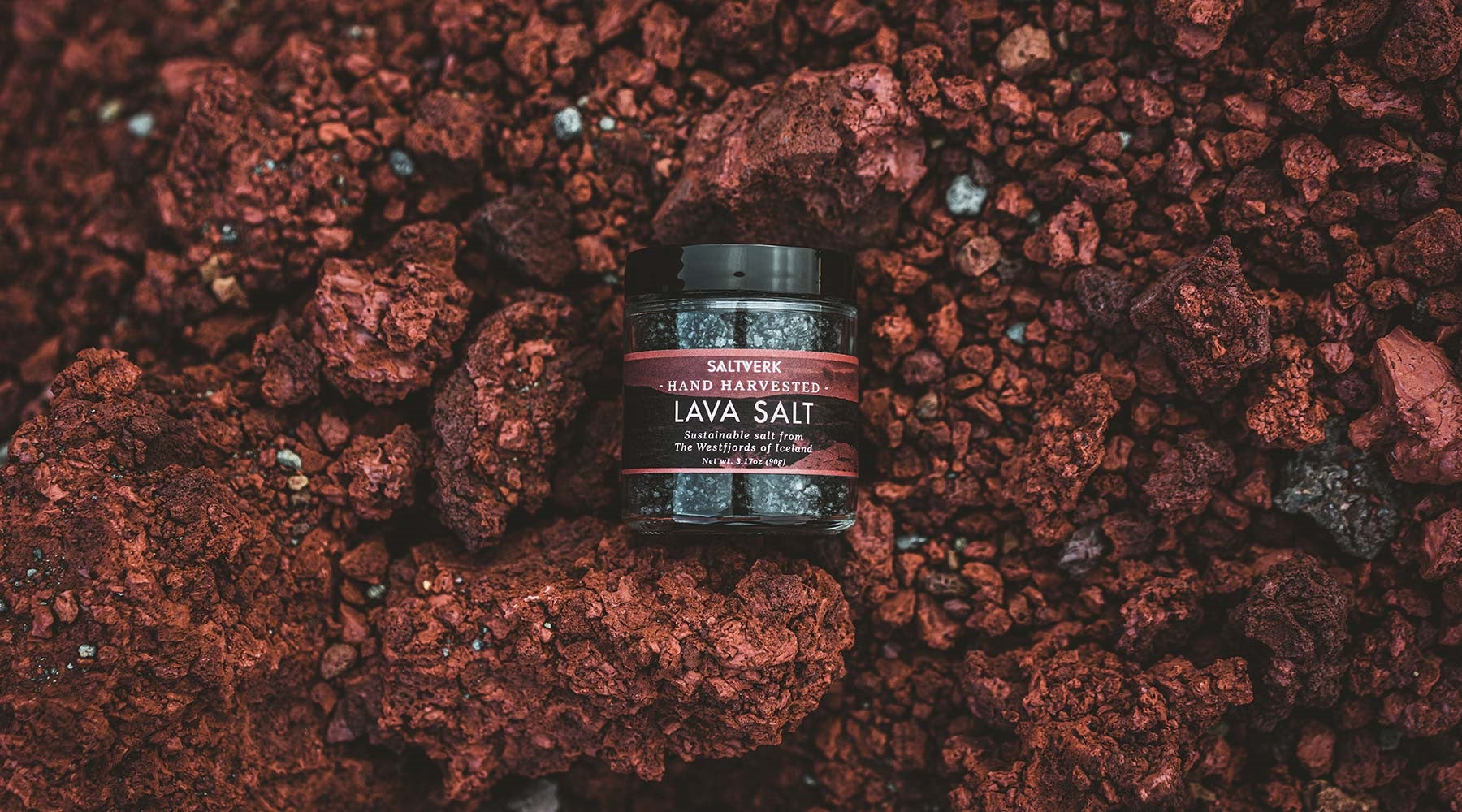
The Epic Journey of Icelandic Rye Bread - From Geothermal Magic to Gourmet Delight
Icelandic Rye Bread, sometimes called Lavabread, Volcano Bread, Thunder Bread, Pot bread, or Geyserbread, or in Icelandic Rúgbrauð or Hverabrauð.
Rye bread is a all year-round essential food in Iceland. The dense, mildly sweet, hearty rye bread is ubiquitous in its native Iceland. Thunder bread is traditionally sliced very thin and served with smoked, cured, or pickled foods such as; smoked trout, salmon, herring. That said, it's also delicious with a simple smear of salted butter and and cheese.
What is geothermal bread or volcano bread?
Rye bread traditionally known as Hverabrauð (hot spring bread, lava bread and volcano bread) is a unique type of bread baked that is traditionally baked in a special pot underground in the heat of local geothermal hot springs or geyser for 24 hours. This dense rye loaf, called Rúgbrauð, in Icelandic offers a rich sweet flavor.
The history of Icelandic Rye bread
The history of Icelandic rye bread, known as "rúgbrauð" in Icelandic, dates back centuries and is deeply rooted in the country's traditional methods of food preparation and its unique natural resources. Throughout the centuries, rúgbrauð has maintained its status as Iceland's favored bread, mainly due to the affordability of rye grains.
Rye was likely introduced to Iceland by Norse settlers during the country's early history, around the 9th and 10th centuries. The cultivation of rye became essential due to the challenging climate and soil conditions that made it more suitable than other grains. The historical absence of raising agents resulted in all rúgbrauð being crafted from sourdough, a practice that predates its current trendiness.
In times when household ovens were non-existent until the 20th century, rúgbrauð was traditionally prepared in pots over stove embers, relying on prolonged baking and low heat for sweetness.
As electric ovens emerged and rising agents became available, a shift occurred, leading to the use of sugar or syrup in rúgbrauð recipes to expedite the baking process.

How to make Icelandic rye bread?
One of the best things about rúgbrauð is that it is incredibly simple to make, even for those who are not experienced bakers. Unlike other breads that require yeast and kneading, rúgbrauð is made by simply mixing all the ingredients together.
Traditionally, rúgbrauð dough was shaped in empty milk cartons and buried near natural hot springs for geothermal cooking, enabled by Iceland's abundant use of renewable energy sources, with two-thirds of their energy derived from geothermal. While sealed tins have mostly replaced milk cartons, it is important to use the slow and extended baking time in the oven. By opting for an extended cooking duration, the bread attains a notable level of sweetness compared to the shorter baking time in a conventional oven. The absence of yeast is compensated for the use of a sourdough starter to initiate the fermentation process.
While recipes may differ, Icelandic volcano bread commonly involves blending rye flour with components like milk and golden syrup. There's no need for kneading; just mix these ingredients thoroughly, and once combined, transfer the mixture into a baking tin.
What is Icelandic rye bread made of?
The Icelandic rye bread is made of rye flour, whole wheat or all-purpose flour, baking soda, salt, Icelandic súrmjólk (sour milk) and golden syrup or sugar.
Recipe for rye bread
Ingredients:
3 cups of rye flour
1 ½ cups of whole wheat or all-purpose flour
2 ½ tsp of baking soda
1 tsp of salt – ideal to use Saltverk Flaky Sea Salt
750ml of kefir
1 cup of golden syrup
Method:
Combine the dry ingredients (rye flour, whole wheat or all-purpose flour, baking soda, and salt).
Add the kefir and golden syrup to the dry ingredients. (Pro tip: coat the inside of the measuring jug with oil or butter for easy pouring of the syrup).
Mix all the ingredients together until well combined.
Transfer the dough to a form of your choice (we used a Quality Street tin lined with baking paper, milk cartons, or a dutch oven will also work well).
Do not let the dough wait for too long before baking, otherwise, it might start rising.
Preheat the oven to 200 °C and bake for 30 minutes.
Lower the temperature to 100 °C and continue baking for 7 hours.
Enjoy your homemade Rúgbrauð!

What is the best topping on rye bread?
This dense bread strikes the perfect balance between sponginess and a subtle caramel note, due to the golden syrup. For an optimal experience, serve the bread while it's still hot. To fully savor the traditional taste, enjoy Rúgbrauð with toppings like herring, smoked salmon, or lamb. Alternatively, many Icelanders relish it generously spread with butter. A simple yet delightful option is to indulge in the bread with a smear of salted butter for a delicious treat.
Why is Icelandic rye bread sweet?
Icelandic rye bread, Rúgbrauð, also has a sweet flavor due to the ingredients used in its preparation. One key element contributing to the sweetness is the inclusion of golden syrup in the recipe. Golden syrup, which is a thick, amber-colored syrup made from sugar cane, imparts a distinct caramel-like sweetness to the bread.
Additionally, Icelandic rye bread is slow-baked, and the prolonged cooking time in the natural geothermal heat of the earth plays a role in enhancing the sweetness of the bread. Cooking the bread over an extended period allows for the development of complex flavors, including the caramelization of sugars present in the ingredients, which breaks down the starch in the rye and makes it sweet. The bread becomes sweet on its own when it is baked.
While sweetness is a characteristic feature of Icelandic rye bread, it's important to note that recipes may vary, and individual preferences may influence the level of sweetness in different versions of the bread.
Where can you find and buy Icelandic rye bread?
Icelandic rye bread can be bought at The Icelandic Store. Here you can see how much rye bread costs. We wrap it safely and bring it to your doorstep by DHL Express. Order online
What is the expiry date of Icelandic rye bread?
There are ways to store rúbrauð to maximize the freshness and shelf life of the bread. Rye bread will last about 5 to 7 days in the pantry at normal room temperature, and up to 3 months if you store it in the freezer.
If you don't anticipate finishing the rye bread within a few days, consider refrigerating it. Place the bread in a plastic bag or wrap it in plastic wrap to prevent it from drying out. Keep in mind that refrigeration may make the bread slightly firmer, so you may want to bring it back to room temperature or warm it up before serving.
For longer-term storage, you can freeze rye bread. Wrap the bread tightly in plastic wrap or aluminum foil, and then place it in a resealable plastic bag. Label the bag with the date for reference. Frozen rye bread can last for several months. When ready to use, thaw the bread at room temperature or warm it up in an oven.
What is the national bread in Iceland?
The traditional rye bread known as "Rúgbrauð" is often considered a national bread in Iceland. Rúgbrauð, also referred to as Icelandic volcano bread, is distinctive for being baked using the natural geothermal heat of the earth. This dense and sweet rye bread has a unique flavor, often enhanced by the addition of ingredients like golden syrup. It is commonly enjoyed with various toppings such as herring, smoked salmon, or lamb, and it's also delicious when spread with butter. While Rúgbrauð may not have official status as the national bread, it holds cultural significance and is a beloved part of Icelandic culinary heritage.
Is Icelandic lava bread good for you?
Rye bread has been associated with various potential health advantages, such as enhanced blood sugar regulation and improvements in heart and digestive health.
Icelandic rye bread, enriched with whole-grain rye flour, delivers essential nutrients such as fiber, vitamins, and minerals for overall health. With minimal or no added fats in traditional recipes, this bread stands out as a lower-fat alternative when compared to certain other bread varieties. Some recipes may include sweeteners like golden syrup, contributing to the sweet taste but also adding sugar to the bread.
For individuals with mild digestive sensitivities, Icelandic rye bread offers potential benefits as it can be easier to digest than wheat-based bread.
The favorable fiber content in Rúgbrauð supports digestive health, but it's important to be mindful of portion sizes to prevent discomfort for those who may be sensitive to excessive fiber intake.
In summary, Icelandic rye bread, when consumed in moderation and as part of a balanced diet, can be a nutritious choice.
Why is rye bread so popular in Iceland?
Rye bread has become an integral part of the Icelandic cuisine. Rye has been cultivated in Iceland for centuries, and it has been a staple grain in the Icelandic diet. The appeal of Icelandic rye bread, particularly Rúgbrauð or volcano bread, lies in its unique flavor and cultural significance. Many people find it delicious, enjoying its dense texture, slightly sweet taste (often due to the inclusion of ingredients like golden syrup), and the rich, complex flavors developed during the baking process. The traditional method of baking in the natural geothermal heat of the earth adds an extra layer of uniqueness. It's often enjoyed with various toppings, such as herring, smoked salmon, or smoked lamb (hangikjöt), showcasing its versatility in different culinary contexts.
To truly determine if it suits your taste, it's worth giving it a try. Many visitors to Iceland find the experience of trying Rúgbrauð to be a memorable part of their culinary exploration.
.



Leave a comment
This site is protected by reCAPTCHA and the Google Privacy Policy and Terms of Service apply.